New Cosmology
Astrophysicists have discovered plasma in our skies since the 1960s and increasingly regard plasma a key element in understanding not only Earth and our solar system, but also life and the universe. Dr. Mae-Wan Ho
Big Bang theory based exclusively on gravity depends on hypothetical entities such as black holes, dark matter and dark energy that have never been observed; its connection to empirical observations is so tenuous that every astronomical discovery made by the numerous space missions and surveys with powerful arrays of telescopes is greeted with sheer ‘surprise’. Each ‘surprising’ discovery, as Australian astrophysicist Wal Thornhill points out [1], “results in ad hoc computer models built from ‘off-the-shelf’ ideas and software [programmed] to approximate what it is imagined has been discovered… Though it purports to explain observed phenomena, the big bang requires one to rationalize an immense field of accumulating anomalies, forcing cosmologists to devote most of their time to inventing ways around the contradictions by introducing purely theoretical constructs like dark matter, dark energy, black holes and much more.”
In contrast, the Electric Plasma cosmology is based firmly on electromagnetic forces and the behaviour of plasma currents that can be observed and measured at all scales, from the laboratory to planetary, galactic, and intergalactic realms.
Plasma processes are archetypal fractal processes with self-similar structures over practically all observable scales. That means predictions from laboratory experiments can be extrapolated to astrophysics, and conversely, observations from astrophysics can be tested and reproduced in the laboratory, as pioneers of the Electric Plasma Universe have pointed out [2, 3]. Furthermore, computer simulations based on known physical properties of plasmas and plasma currents can reproduce both the experimental results in the laboratory and the astrophysical phenomena. Electromagnetic forces are up to 39 orders of magnitude stronger than gravity, and there is hence no need for dark matter or dark energy, or indeed for black holes. Recently, ‘supermassive black holes’ supposed to exist at the centre of most if not all big galaxies are found to have supermagnetic fields practically on top of them that could much better account for all the surprising phenomena associated with the galactic nuclei (see [4] Supermagnetic Field or 'Supermassive Black Hole', SiS 67). Furthermore, these supermagnetic fields naturally arise from cosmic scale plasma interactions that give rise to galaxies.
This new series of articles will introduce the Electric Plasma Universe starting from the basics, and bring in new astronomical observations that could be understood in terms of known properties of electric plasmas (see also [5] Continuous Creation from Electric Plasma versus Big Bang Universe, SiS 60 for more background). Obviously, this is just the beginning of an exciting adventure that will take us to the furthest reaches of our universe as there is still a lot to learn about cosmic plasmas, starting with those closest to home.
American plasma and nuclear physicist Anthony Peratt at Los Alamos National Laboratory New Mexico is a pioneer and major proponent of the Plasma Universe (which I am using interchangeably with the Electric Universe). His book Physics of the Plasma Universe first published in 1992 [2] anticipated the “growing recognition of the need for plasma physics in astrophysics”. In fact, astrophysics (as distinct from astronomy and cosmology) has contributed significantly to the growth of plasma physics. Earth’s natural plasmas, the Van Allen radiation belts, and the solar wind had been discovered by the 1960s and it soon became clear that plasma was the key element in understanding not only the Sun and our own planet, but also how magnetic fields are generated in planets, stars, galaxies, and how clouds of plasmas are condensed into galaxies and stars by electromagnetic forces.
Plasmas are low density electrically charged particles that respond collectively to electromagnetic forces. The charged particles are usually clouds or beams of electrons or ions, or mixture of electrons and ions or charged dust particles [2]. Plasmas in their quiescent state are invisible in the visual spectrum and make up more than 99.9 % of the matter in the universe. Plasmas are the ultimate stardust from which the visible universe of stars and planets (and their living inhabitants), galaxies and supergalaxies (clusters, walls, and networks of galaxies) are created. The creation of stars and galaxies are often highly energetic, sometimes explosive events associated with massive electrical discharges, releasing the energy stored in stellar, galactic, and supergalactic electric plasma circuits. Hence plasmas are also the main engine of creation in the Plasma Universe.
Plasmas are responsible for both the accretion and the redistribution of matter in forming galaxies, stars and planets through electromagnetic forces. They are also prodigious producers of electromagnetic radiation in the entire spectrum from radio waves through visible to X-rays and γ-rays; all subject to real time observations through huge arrays of powerful telescopes and dedicated space missions (see [5]). Gravity follows only when matter is sufficiently condensed from its plasma state; and even then, electromagnetic plasmas continue to play a pivotal role in shaping and reshaping the heavenly bodies, and especially in the origin and evolution of life. Without Earth’s magnetic field, our atmosphere would be stripped away by the solar wind, and life on Earth would have been impossible [6].
The term ‘plasma’ was coined by American electrical engineer and Nobel chemist Irving Langmuir (1881-1957) in his study of ionized gases, probably borrowing from biomedical science to capture the dynamic collective, almost life-like behaviour of those gases [2]. Langmuir was also the first to note the separation of plasma into cell-like structures enclosed in charged sheaths. This cellular structure is indeed observed wherever plasmas with different densities, temperatures, or magnetic field strengths come into contact, and they often do. In addition to the cellular formations, plasmas often display filamentous structures in their most conductive state when the flow of electric current induces a ringed magnetic field around the current, pinching the current into long conducting filaments (see later).
Nearly all matter in the universe exists in the plasma state, predominantly in the Sun and stars, and in interstellar and intergalactic space. Auroras (northern and southern lights), lightning, welding arcs are also plasmas. Plasmas are found in neon and fluorescent tubes, in clouds of electrons that move freely within energy bands of crystalline metal solids. Plasmas vary over a remarkable range of temperature - from hundreds of thousands of electron volts (1 eV = 11 605 deg K) to one-hundredth of an electron volt - and density - from ‘tenuous’ with only a few electrons per cm3 to dense with >1020 electrons per cm3 (Figure 1) - far exceeding the range for ordinary solids, liquids, and gases.
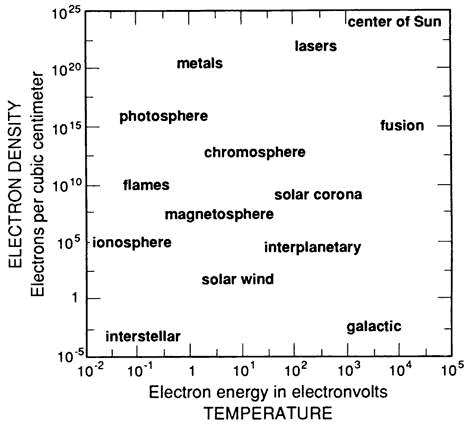
Figure 1 The range of density and temperature of plasmas ( from [2])
The most dramatic events associated with cosmic plasmas are electrical discharges, the sudden, at times, explosive release of electric or magnetic stored energy. These are local phenomena involving processes such as rapid heating, ionization, the creation of pinched and filamentary conduction channels, particle acceleration, and generation of phenomenal amounts of electromagnetic radiation [2]. A good analogy is a multi-terawatt pulsed-power generator on earth that relies on strong electrical discharges to produce intense particle beams, X-rays and microwaves. Megajoules of energy electrically stored in huge capacitor banks are transferred to a discharge location many metres from the source via a transmission line, the discharge location being just a few cubic centimetres in volume.
Cosmic plasma electrical discharges may well be involved in creating stars and galaxies. Electrical discharge of cosmic plasma is a simpler, more realistic explanation of the extremely bright ‘supernovae’ explosions that have been observed, rather than the conventional ‘gravitational collapse of massive stars’ or ‘sudden re-ignition of nuclear fusion in a degenerate star’ [7], as Thornhill pointed out [8]. (In fact, the entire history of the universe, from the formation of supergalaxies to stars to planets, may well have to be rewritten.)
Two key features of plasmas responsible for creating the Plasma Universe are magnetically field-aligned electric currents (FACs, also called Birkeland currents) and electric double layers (DLs).
Birkeland currents are named after Norwegian scientist Christian Birkeland (1867-1917) [9]. Birkeland carried out extensive studies on the aurora borealis (northern lights), and found in his laboratory that an electron beam directed towards a ‘terrella’ (magnetised sphere as model of Earth’s magnetosphere at the centre of a vacuum chamber) was guided towards the magnetic poles to form rings of light by exciting the residual gas molecules there, and concluded that the aurora could be produced in a similar way (see Box 1 for a more technical description of Birkeland currents).
Box 1
Birkeland currents (modified from [5])
Birkeland currents are ‘force-free’ plasma currents in which the magnetic and electric fields are aligned (instead of being orthogonal as when an electric current is passed through a wire or a coil of wire). Any current flowing in a conductor or filament will induce a magnetic field B around it. The lines of equal magnetic flux density will be in the form of rings around the current axis, with magnetic flux density decreasing away from the axis. The interaction of the current with its own magnetic field will cause a pressure to develop radially inward on the current filament according to the vector product of current I and magnetic field B written as (I x B). This is referred to as a Z-pinch. In a metal conductor, the pressure is resisted by the atomic ion lattice. In a plasma current, the pressure can be balanced by the pressure of the plasma inside the filament. This results in a steady state where the current can flow axially across its circling magnetic field. The pinch effect can be demonstrated in the laboratory to crush aluminium cans by applying a strong magnetic field very quickly. Magnetic field forces in lightning can create an inward pinch strong enough to crush a solid copper grounding rod.
In space the neutral gas pressure is usually negligible, so I x B force can minimize and disappear. That happens when current direction and magnetic field direction are parallel, so the vector product is zero. The result is a force-free field-aligned current. To get to that state, electrons near the centre of the filament flow in almost straight lines and generate the ring shaped magnetic field around them. This influences the electrons further from the centre causing them to move in a more helical path (like a solenoid) aligned with the main current direction. This helical motion creates in turn the straight magnetic field lines close to the axis. Any individual electron in the current is flowing along the magnetic field direction in its own vicinity, but collectively the filament is preserved. This means very large currents can be assembled out of small current elements and transmitted over huge distances.
But suppose that the current I in the Birkeland current is caused by an electric field E. There is also a force arising from the interaction of E and the magnetic field B. E will not be entirely aligned with the total B, which is the vector sum of the external magnetic field through which the current flows and the magnetic field generated by the current itself. The E x B force occurs wherever E is not parallel to B. This E x B force acts on charged particles in and around the current cylinder and causes both ions and electrons to move toward the centre of a filament. Plasmas often contain a high proportion of charged dust grains, which will also be drawn into the filament. Viscous drag between the charged particles and neutral atoms will tend to draw the neutral atoms toward the filament as well. Thus, current filaments in space will tend to accumulate matter as a result of the misalignment of the electric field causing the current and the total magnetic field.
The E x B force is radially inwards and results in the increase in particle density near the axis of the current where two things can happen: radiative cooling from the regions of increased density near the centre, and recombination of ions and electrons starts.
Every chemical element has a particular ionization energy at which it will either ionize or recombine. A characteristic velocity - the Critical Ionization Velocity (CIV) - can be derived at which the kinetic energy of motion is equal to the ionization energy. The CIV values of elements commonly found in space are not randomly distributed but are grouped into four distinct bands: He (24 eV); H, O, N (13 eV); C, S (11 eV), and Fe, Si Mg (8 eV). On account of their differing CIVs, different ions will recombine at different radii as they move towards the centre to progressively cooler regions. These elements will be expected to form hollow cylinders of increasing radii according to their CIV, with He making up the most widely distributed outer layer, hydrogen, oxygen and nitrogen next, then carbon and silicon, and so on. This process is known as Marklund convection after the Swedish physicist Göran Marklund at the Royal Institute of Stockholm (KTH) who discovered it.
As pinches can occur if there is any misalignment of I and B, matter drawn into the filament will also be compressed. If the pinch force is large enough, it can fragment the filament into discrete spherical or toroid plasmoids along the axis of the current. Any matter in the pinch zone would become compressed into the same form. These pinch effects could be very important in forming stars and galaxies.
Most plasmas in space tend to settle into a force-free configuration in which
(∇ x B) x B = I x B = 0 (1)
Force-free fields tend to have a twisted fibril appearance [2, p.28]. The condition of a force-free field (Eq 1) can be satisfied in three ways B = 0, ∇ x B = 0 (I = 0), or
∇ x B = α B (2)
where α is a scalar. The force-free field with scalar α is the lowest state of magnetic energy that a closed system can attain. This proves the stability of force-free fields with constant α , such that in a system where magnetic forces are dominant and in which there is a mechanism to dissipate the fluid motion, force-free fields are the natural end configuration. In astrophysics, the dissipation mechanism may be the acceleration of charged particles to cosmic ray energies.
However in a recent important analysis of the Birkeland current [10], Donald E. Scott, retired professor of Electrical Engineering at the University of Massachusetts-Amherst, showed that accepting Eq (2) as a condition of the force-free field is misleading, as it assumes a priori that for any nonzero α , a nonzero valued B at any point requires the existence of a current density j ≠ 0 at that point. That assumption is unwarranted especially in the light of the well-known tendency of plasmas to form filaments thereby creating regions where j = 0 but B ≠ 0. Instead, in his derivation, α acts as a force-free parameter, a scale factor of radial distance. He showed that both the axial (straight along the axis of current flow) and azimuthal (the ring component) magnetic field current density components cyclically reverse their directions with radial distance from the central axis of the current, and the magnetic field extends much farther from the central axis within a force-free field than it would if produced by a current in a long straight conductor (Figure 2). The total magnetic field magnitude and current density are shown to vary inversely as the square root of r. For large r outside the plasma, the azimuthal magnetic field varies as 1/r. These results are shown to be consistent with laboratory and astronomical observations.
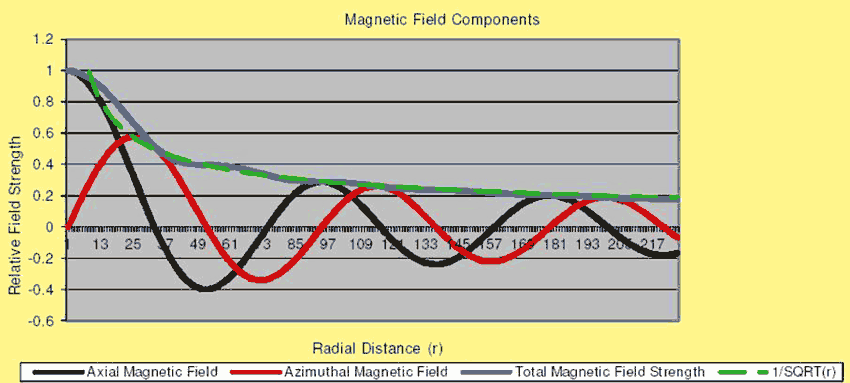
Figure 2 Magnetic field components of the Birkeland current [10]
Figure 2 shows that within the plasma, at increasing radial distance from the current axis, the magnetic field together with its colinear current density wrap the axis of the current stream with a continuously increasing helical pitch angle. Looking in the z direction (along the axis of the current stream), one sees a set of virtual concentric cylindrical surfaces centred on the z axis where the axial component Bz is zero, the azimuthal magnetic component Bθ is at alternately clockwise and counter-clockwise maxima (Figure 3). (This sets up a Lorentz force (perpendicular to both the direction of charge movement and the field) that alternately drives ions and neutral particles to regions between the maxima.)
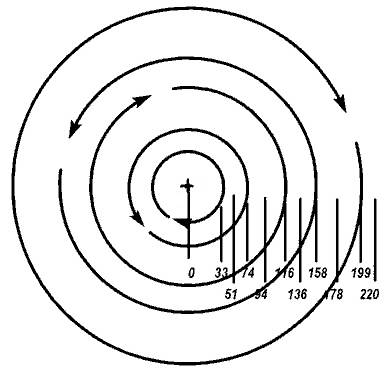
Figure 3 Cross-section of a force-free current [10] (see text for details)
The result is a total magnetic field vector that wraps the current stream, its pitch angle rotating with increasing r in a clockwise direction when viewed inward in a radial direction towards the central axis of the current. In Figure 4, one complete cycle of the pitch angle is presented in 11 incremental steps at increasing r. The turquoise arrows show the total magnetic field direction at each value of r and the white arrows show the field direction at the previous increment.
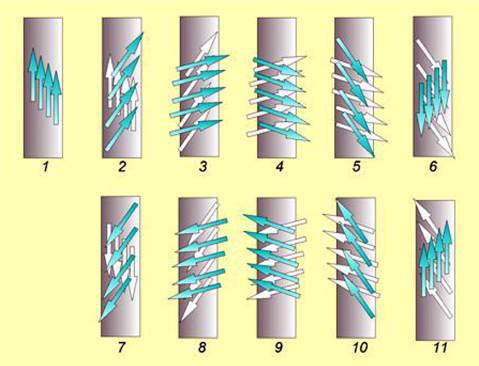
Figure 4 The pitch angle of the helical total magnetic field B vector encircling a field aligned current changing continuously with increasing radial distance r from the central axis of the current [10]
In the conventional diagram of the Birkeland current (Figure 5), only a quarter cycle of 90˚ is represented where it is assumed to stop abruptly.
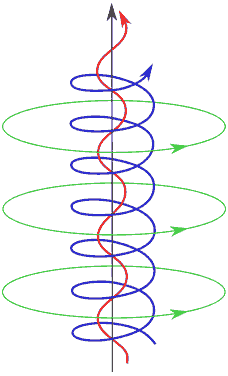
Figure 5 The Birkeland current as conventionally represented; black straight line is the current flow, the red and blue helices and green rings are total magnetic field vectors at increasing radial distance with increasing pitch angles up to 90˚
Birkeland currents are the electrical transmission lines permeating the universe; they also accrete and concentrating matter along their lengths, creating supergalaxies, galaxies, stars and planets, and as Birkeland rightly surmised, Birkeland currents are indeed responsible for creating auroras on Earth and on other planets (see [11] Earth’s Magnetized Plasma Shield & Earth-Sun Connection, SiS 68).
The electric double layer (DL) consists of two thin and closely opposed regions of opposite charge excess giving rise to a sharp potential drop and therefore a strong electric field across the layer [2].
Nobel laureate space physicist Hannes Alfvén (1908-1995), widely acknowledged pioneer proponent of the Plasma Universe, placed special emphasis on DLs (as well as on Birkeland current around Earth and the Sun, and in galactic and intergalactic circuits). In a keynote address to a conference on Double Layers in Astrophysics, he said [3]: “Since the time of Langmuir, we know that a double layer is a plasma formation by which a plasma – in the physical meaning of this word - protects itself from the environment. It is analogous to a cell wall by which a plasma – in the biological meaning of this word – protects itself from the environment.” He was referring to the DLs around clouds of plasmas that serve a protective function.
DLs not only separate plasmas or regions of plasma with quite different characteristics [12], they are found within a wide variety of plasmas from discharge tubes to the Birkeland currents supplying Earth’s aurora (see [11]), and most likely plasmas in interstellar and intergalactic space. They are especially common within current-carrying plasmas, where they form current-carrying DLs. Compared to the sizes of the plasmas that contain them, DLs are very thin, typically ten Debye lengths, ranging from a few millimetres for lab plasmas to thousands of kilometres for astrophysical plasmas. (A Debye length in plasma physics is the distance over which charge separation can occur. In space plasmas, where the electron density is relatively low, the Debye length is correspondingly large.) Ions and electrons that enter the double layer are accelerated, decelerated, or reflected by the electric field. A double layer is said to be relativistic if the potential drop is so large that the total gain in energy of the particles is larger than the rest mass energy of the electron or the ion. The rest mass energy of the electron is 511 keV and that of proton is 938 MeV, and those of other ions even larger.
Of special interest for applications to astrophysics is the acceleration of charged particles traversing the DL by the net potential difference across the DL. A detailed treatment of the DL is given by Peratt, who devoted a long chapter to it in his book [2].
The current and the potential difference have to be maintained by an external source. Current-conducting plasmas can form double layers once a threshold in current density is passed. Observations show that electric currents in cosmic plasmas often tend to flow in thin filaments or sheets (Birkeland currents). Particularly in filaments, current density may reach relatively high levels, and hence, as suggested by laboratory experiments, the conditions are optimal for DL formation. In current filaments, the ions and electrons accelerated by the DL form beams when leaving the layer. These beams exert a pressure surrounding the layer. As a result, the DL may expand or even explode. (Indeed, according to Alfvén [3], exploding double layers are the sources of X rays and γ rays, and accounts for solar flares and other dramatic discharge phenomena in astronomy.) Expansion leads to a growing potential drop across the layer and ever larger beam pressures. As the thickness d of the DL grows further, the potential drop increases more slowly until d >> a (the radial extension of the DL); the potential drop then tends to a constant and maximum value. In the relativistic regime, the maximum potential drop of the DL is a function of the total current rather than the current density. One condition for the maximum potential drop to be approached is that the DL expands so its thickness becomes larger than it radius. There is another condition that also has to be fulfilled if the DL potential is to approach the maximum value φDLm. Due to the fact that the magnetic energy stored in the current filament cannot be released faster than the Alfvén travel time along the filament, there is an upper limit to the power that can be supplied to the circuit. For the maximum DL potential to be reached, this power has to be at least equal to the maximum power of the double layer, I0φDLm. This condition seems to be well met in cosmic circuit. (Alfvén travel time τA = lc/vA, where lc is characteristic scale length of the circuit, and vA = B/√μ0ρ is the Alfvén velocity, where B is the magnetic field strength, μ0 is the permeability of the vacuum, and ρ = Σnsms is the total mass density of the charged plasma particles. )
Alfvén was the first to point out that the X-rays and γ-rays detected by the special telescopes orbiting in space are produced by magnetized plasmas (see [3]). Magnetized plasmas, especially in connection with DLs and FACs accelerate electrons to some 103 eV (electron volts) to create the auroras at Earth’s magnetic poles. Solar flares, by the same mechanisms, accelerate electrons to energies 109 to 1010 eV in the Sun’s corona, which extends millions of km from its surface. Under cosmic conditions, even higher energies are possible. High energy magnetized plasmas not only emit X-rays and γ-rays, but also synchrotron radiation (continuous band of polarized radiation emitted by charged particles spiralling in a magnetic field) that often falls in the radio bands. Hence, radio astronomy too, gives information about the plasma universe.
Both in the laboratory and in the solar system, filamentous and cellular morphology is well-known for plasma. In the 1980s, unexpected filamentous structures turned up on the galactic, intergalactic and supergalactic scales (see [5]). Numerous recent observations in astrophysics are confirming and extending the vision of Hannes Alfvén and other pioneers. The Electric Plasma Universe has arrived. I shall describe some these recent observations beginning with Earth’s own plasma in magnetosphere [11] and proceeding to the galactic and intergalactic realm.
Article first published 21/09/15
Comments are now closed for this article
There are 5 comments on this article.
Anthony Zahm Comment left 23rd September 2015 05:05:48
Given the context of the physical and social sciences, it is rather sad that this is the opus magnum of current human understanding.
So much more awaits the human imagination than trivial topics such as the properties of black holes, yet it becomes the center of controversy in the minds of casual readers and scientists alike.
What is possible in all of the human diversity on this planet is the possibility to concede our imagination to the imagination of others, even though we may not know what lies underneath that double layer.
Maybe it is for the good, the ethical, or the truth, the logical, or the beauty, the aesthetics, but it will forever be handed over to the generations to come.
Altogether, those three qualities should be ascertained to the highest degree before deciding on the future embodiment of the magnum opus.
Due regards to those who have made the present understanding possible.
Jocelyn Braddell Comment left 22nd September 2015 03:03:39
Dear Madame Mae-Wan Ho, I am so delighted to receive this article. A thrilling read that I sent to my son Jules Braddell immediately. I am only sorry that James Hogan who came to settle in Ireland hoping to develop these matters did not live to take his place among the original thinkers of the present time. (You will remember I wrote to you about him) Please receive my most sincere congratulations. Regards from Jocelyn Braddell
Mike Godfrey Comment left 22nd September 2015 15:03:47
A major step forward in understanding what and where we are with the only missing factor being the Universal Consciousness
Todd Millions Comment left 24th September 2015 05:05:17
There was a report about 5 years ago that the bacterial layer on the bottom of the pacific ocean seemed too act as a 'single conductor' for electrical currents. I haven't time too try to dig up the original report now -but could this be part of a grounding circuit for the plasma interactions with our magnetic field? I worry that the original conductive mat may not be conformable at this point due too the radioactive contamination more than japan and the israelis are trying too hide by ignoring.
Vince Halpin Comment left 7th October 2015 15:03:24
My thanks for so much indepth information. I had thoughts similar to Mike Godfrey re consideration of a Universal Consciousness.